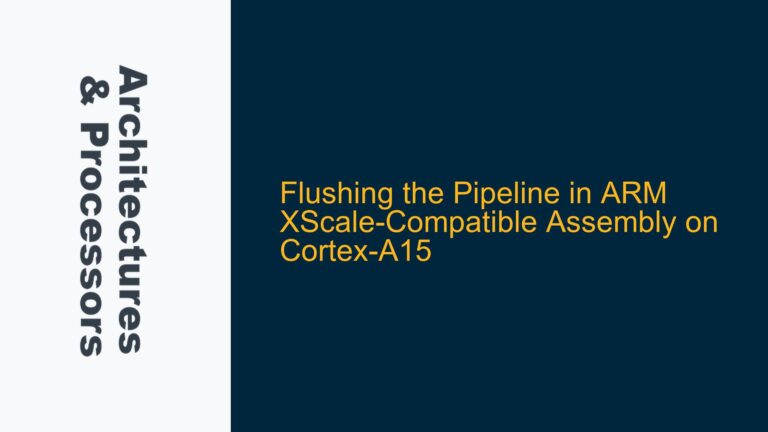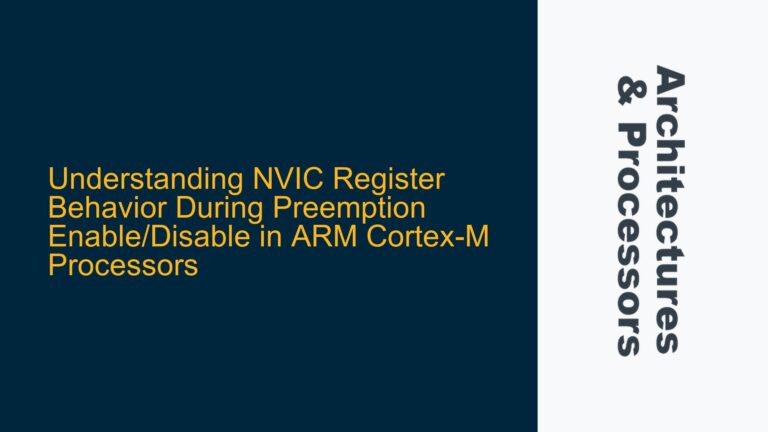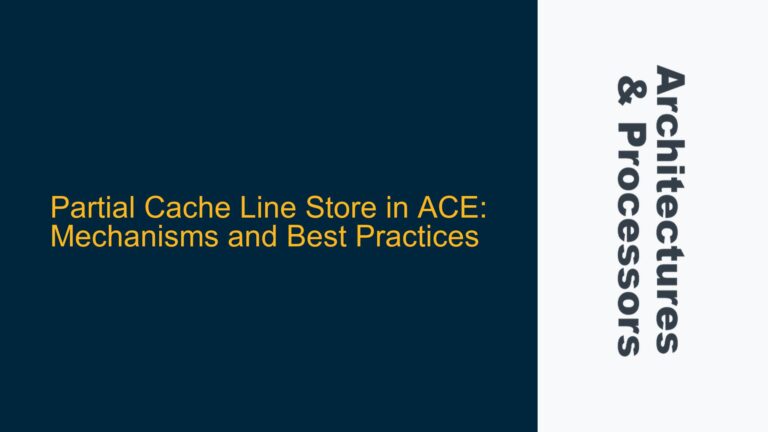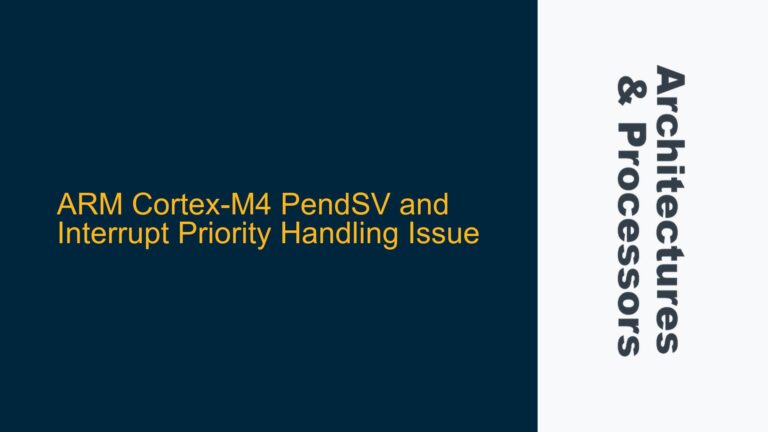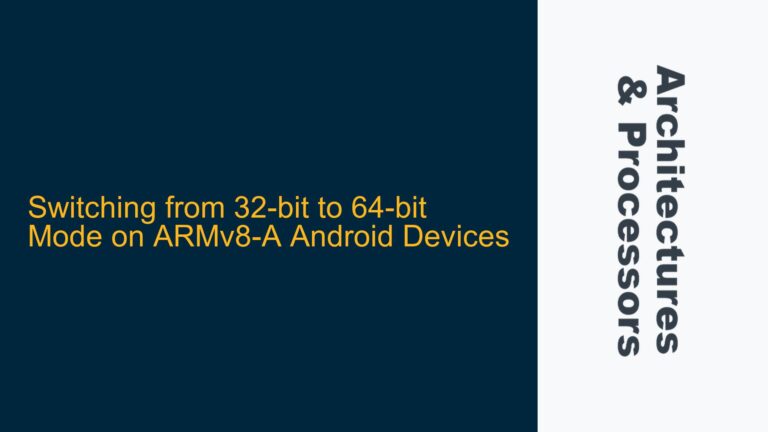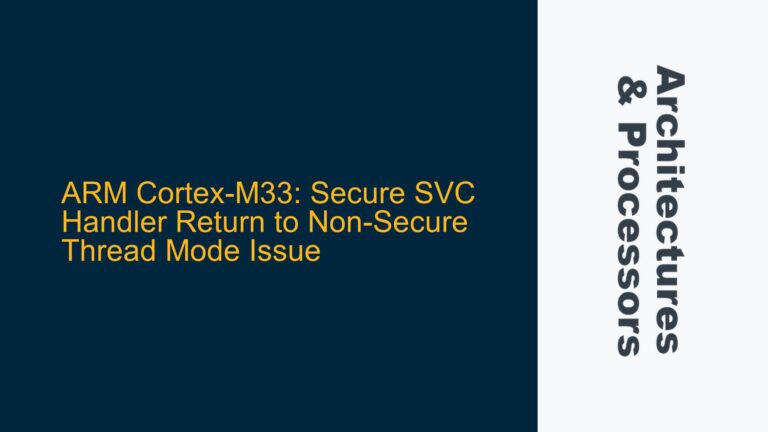AHB-Lite Protocol’s Pipelined Transfer Requirements
The AHB-Lite protocol, a subset of the Advanced Microcontroller Bus Architecture (AMBA) family, is designed to facilitate high-performance communication between masters and slaves in a system-on-chip (SoC). One of the key features of the AHB-Lite protocol is its pipelined transfer mechanism, which separates the address phase and data phase of a transaction. This separation allows for overlapping operations, where the address of the next transaction can be issued while the data phase of the current transaction is still ongoing. This pipelining is crucial for achieving high throughput and efficient utilization of the bus.
However, the pipelined nature of the AHB-Lite protocol raises an important question: must the master processor itself be pipelined to effectively interface with the AHB-Lite bus? The answer lies in understanding the protocol’s design intent and the implications of using a non-pipelined master architecture.
In a pipelined master architecture, the processor is designed to handle multiple stages of instruction execution simultaneously. This allows the master to issue addresses and data in a manner that aligns with the AHB-Lite protocol’s pipelined transfer mechanism. The master can initiate a new address phase while the data phase of the previous transaction is still in progress, thereby maximizing bus utilization and overall system performance.
On the other hand, a non-pipelined master architecture processes instructions sequentially, with each instruction completing before the next begins. In such a design, the master would typically issue both the address and data in a single cycle, or perhaps over two cycles for read operations. This approach is fundamentally at odds with the AHB-Lite protocol’s pipelined transfer mechanism, which expects the address and data phases to be separated and potentially overlapped.
The mismatch between a non-pipelined master and the AHB-Lite protocol’s requirements can lead to inefficiencies and performance bottlenecks. For instance, if the master issues both the address and data in a single cycle, the AHB-Lite interface logic would need to artificially separate these phases, introducing additional latency. Furthermore, the master’s inability to overlap address and data phases would prevent the AHB-Lite bus from achieving its full potential in terms of throughput and efficiency.
Implications of Non-Pipelined Masters on AHB-Lite Performance
When a non-pipelined master is used in conjunction with the AHB-Lite protocol, several performance-related issues can arise. These issues stem from the master’s inability to fully leverage the protocol’s pipelined transfer mechanism, leading to suboptimal bus utilization and increased latency.
One of the primary challenges is the need to artificially separate the address and data phases within the AHB-Lite interface logic. In a non-pipelined master, the address and data information may be available simultaneously, but the AHB-Lite protocol requires these phases to be distinct. This separation typically involves adding additional logic to buffer the address and data, and to control the timing of their presentation on the bus. This added complexity not only increases the design effort but also introduces additional latency, as the interface logic must wait for the appropriate cycle to present the address and data phases.
Another significant issue is the impact on burst transfers. Burst transfers are a key feature of the AHB-Lite protocol, allowing multiple data transfers to occur in sequence without the need to reissue the address for each transfer. In a pipelined master, burst transfers can be efficiently managed by overlapping the address phase of the next transfer with the data phase of the current transfer. However, in a non-pipelined master, the lack of pipelining makes it difficult to support burst transfers effectively. The master may need to insert BUSY transfers on the HTRANS signal to delay the start of the next transfer until the current data phase is complete. This approach can reduce the overall throughput of the bus, as the master is unable to fully exploit the protocol’s burst capabilities.
Furthermore, the non-pipelined master’s sequential processing nature can lead to increased latency in read operations. In a pipelined master, the address phase of a read operation can be initiated while the data phase of a previous write operation is still in progress. This overlapping of operations allows the master to hide the latency of read operations, improving overall system performance. In contrast, a non-pipelined master must wait for the completion of the current operation before initiating the next, leading to increased latency and reduced performance.
The performance implications of using a non-pipelined master with the AHB-Lite protocol are particularly pronounced in high-performance systems where bus utilization and throughput are critical. In such systems, the inefficiencies introduced by the non-pipelined master can become a significant bottleneck, limiting the overall performance of the SoC.
Strategies for Integrating Non-Pipelined Masters with AHB-Lite
Despite the challenges associated with integrating a non-pipelined master with the AHB-Lite protocol, there are several strategies that can be employed to mitigate these issues and achieve a functional, albeit suboptimal, design. These strategies involve modifications to the AHB-Lite interface logic, careful management of bus transactions, and potential trade-offs in system performance.
One approach is to design the AHB-Lite interface logic to artificially separate the address and data phases. This can be achieved by adding buffers and control logic to store the address and data information and to manage their presentation on the bus. The interface logic would need to ensure that the address phase is presented in one cycle, followed by the data phase in subsequent cycles. This approach allows the non-pipelined master to interface with the AHB-Lite protocol, but it introduces additional latency and complexity.
Another strategy is to use BUSY transfers on the HTRANS signal to manage the timing of transactions. When the non-pipelined master initiates a transfer, the interface logic can insert BUSY transfers to delay the start of the next transfer until the current data phase is complete. This approach can help to manage the flow of transactions on the bus, but it reduces the overall throughput and efficiency of the AHB-Lite protocol.
In some cases, it may be possible to modify the non-pipelined master to better align with the AHB-Lite protocol’s requirements. For example, the master could be designed to issue the address and data phases in separate cycles, even if it does not fully pipeline its internal operations. This approach would reduce the need for complex interface logic and improve the alignment with the AHB-Lite protocol, but it may require significant changes to the master’s architecture.
Additionally, designers can consider using a different bus protocol that is better suited to non-pipelined masters. For example, the APB (Advanced Peripheral Bus) protocol is designed for simpler, lower-performance peripherals and does not require pipelined transfers. While APB is not as high-performance as AHB-Lite, it may be a more appropriate choice for systems with non-pipelined masters.
Finally, designers should carefully evaluate the performance requirements of their system and the trade-offs involved in using a non-pipelined master with the AHB-Lite protocol. In some cases, the performance impact may be acceptable, particularly in systems where high throughput is not a critical requirement. In other cases, it may be necessary to reconsider the choice of bus protocol or to explore alternative architectures that better align with the AHB-Lite protocol’s requirements.
In conclusion, while the AHB-Lite protocol is designed to work with pipelined masters, it is possible to integrate non-pipelined masters with careful design and trade-offs. However, designers should be aware of the performance implications and consider alternative approaches if high performance is a critical requirement.

